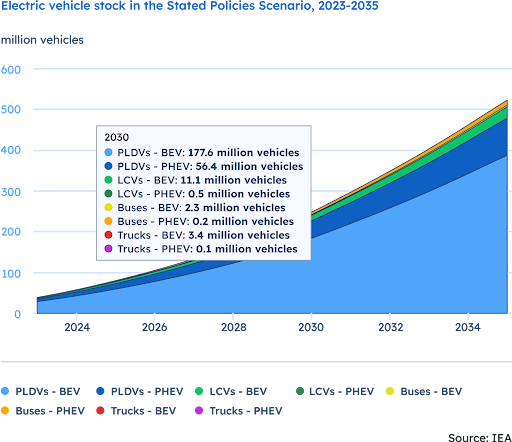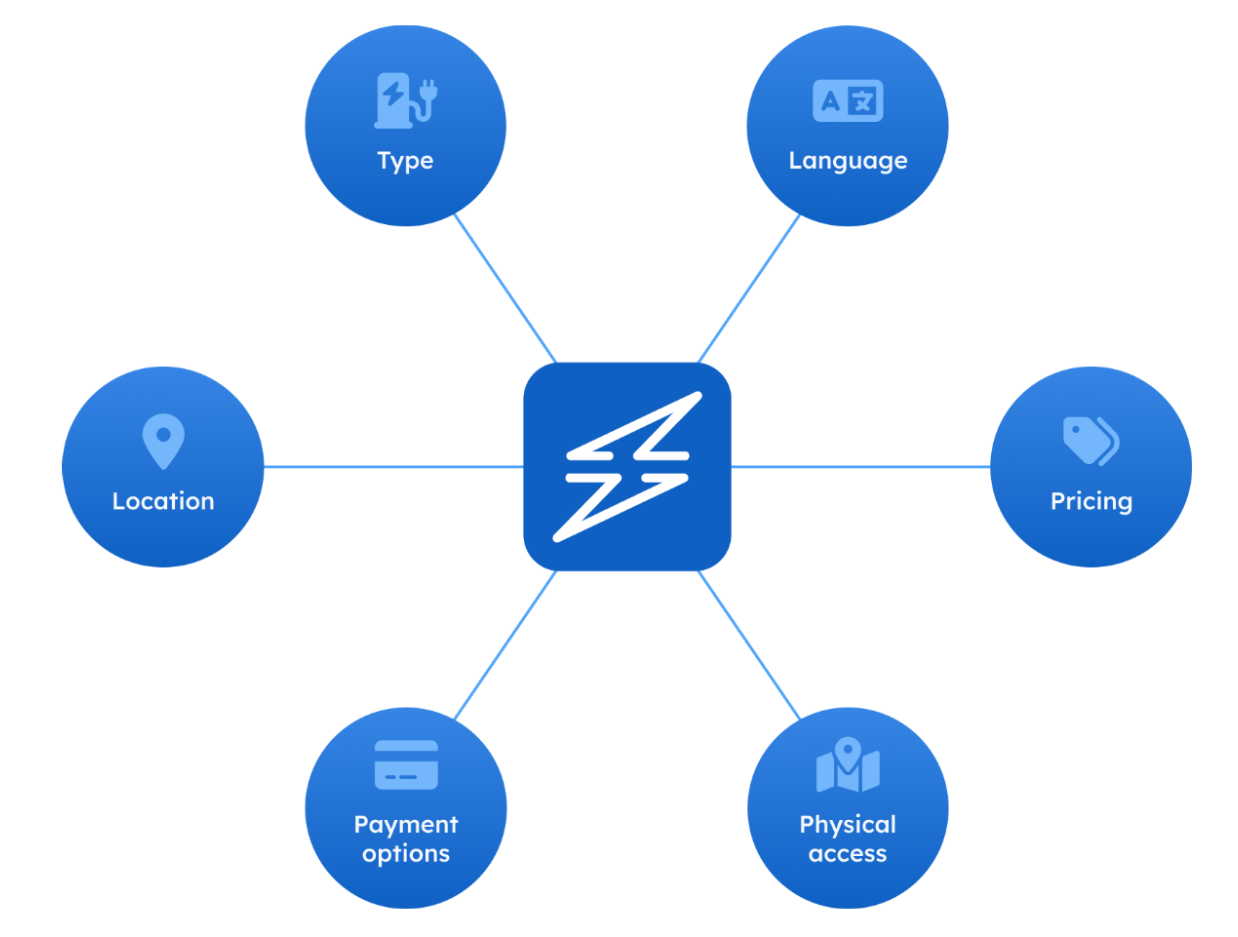Equity in transportation electrification: EV charging infrastructure


· 7 min read
As new electric automakers offer all-electric models designed with sustainability and circular economy principles in mind, it is important that equity concerns are kept as a priority. While vehicle affordability is an important aspect in terms of equitable distribution, this opinion piece focuses on what happens after the purchase of the EV with a particular focus on charging.
Transportation contributes ~20% to all greenhouse gas emissions globally, with road transportation at 12% in particular (Statista). One of the levers to address the issues of Climate change is the electrification of road transportation, which is in full swing across the globe. According to projections by the International Energy Agency, almost 14 million new electric cars were registered globally in 2023, bringing their total number on the roads to 40 million. Electric vehicles (EVs) are projected to represent more than 60% of vehicles sold globally by 2030. (International Energy Agency)

Source: Maria Petrova and Petar Georgiev
Sustaining this growth will require the adequate rollout of recharging infrastructure—on public roads, in commercial buildings, at fleet depots, and at home.
Two aspects need to be considered to establish a shared understanding of the current landscape for the equitable distribution of benefits for transportation electrification.
the ability to purchase an electric vehicle
the ability to charge an electric vehicle
Ensuring that all major groups and the vast majority of people in a society have these abilities is what will make the transportation electrification transition possible.
EV prices are dropping due to cheaper battery technology and economies of scale (BloombergNEF). Affordability of new EV models is key for automakers and they are all working to drive electric car prices down. One way they are achieving this is through leveraging technology across multiple models and even brands and building vehicles on a common platform. A good example is the Volkswagen group, which builds all their EV models for the Audi, Cupra, Škoda, and Volkswagen brands on the MEB platform and also partners with Ford. (VW). As new electric automakers offer all-electric models designed with sustainability and circular economy principles in mind (e.g., Rivian), it is important that equity concerns are kept as a priority.
While vehicle affordability is an important aspect in terms of equitable distribution, this joint opinion focuses on what happens after the purchase of the EV.
The ability to charge an electric vehicle is dependent on a number of factors, which require complex solutions. At its core, it is all about being able to easily access charging infrastructure.
There are the following features of charging infrastructure that define its accessibility:
Type: there are two main types of chargers depending on their accessibility - a) at home ones and b) those open to the general public. Nowadays, the vast majority of EV charging happens in homes, more specifically between 70 and 85%, depending on the geography (International Energy Agency). Looking forward to 2030, up to 50% of all drivers are expected to be partially or wholly reliant on public charging infrastructure. Of that, two-thirds are unlikely to be able to charge their vehicle at home, with many being dependent on on-street charging. It is, therefore, imperative that public charging infrastructure is made fully accessible to drivers (Hallam)
Location: In many cases, charging infrastructure is disproportionately distributed across cities and regions (Rivian). The US is a good example, where historically, redlined communities have long borne the burden of transportation policies that put them at higher risk of health disparities (Forth Mobility)
Language: It is important to understand the interface through which EV charging is consumed—whether a mobile app or the charger itself. This also includes multilingual EV driver support in case the EV charging infrastructure is troubleshooting
Payment options: More payment options make charging easier to use and more accessible, e.g., in-app payments, payment terminals on the charger, vouchers, subscriptions, etc.
Physical access: Providing accessibility to charging for disabled people ensures this societal group is served. According to a Motability study in the UK, by 2035, up to 50% of all drivers or passengers with a disability are expected to be partially or wholly reliant on public charging infrastructure. It is, therefore, imperative that public charging infrastructure is made accessible to people with a disability so they may be able to charge their vehicle
Pricing: As electricity prices become more affordable, EVs will become more accessible to economically vulnerable groups. A charge point’s software can enable all kinds of flexible (smart) pricing offered by energy market players - a good example are day ahead electricity prices offered by Octopus in the UK

Source: Maria Petrova and Petar Georgiev
A research piece by the Smart Electric Power Alliance (SEPA) provides good guidance into what kind of KPIs have to be monitored and measured in order to frame programs and succeed in addressing the equity issues mentioned above. The mentioned research by Forth Mobility reaches similar conclusions.
In summary, there are three groups of metrics:
Target population identification metrics, such as: energy cost index, energy burden index, late payment index, household human development index, etc.
Investment decision-making metrics, such as: community acceptance rating, energy use impacts, energy quality, investment generated jobs, etc.
Program impact assessment metrics, such as: energy savings, energy cost savings, energy burden change, etc.
Taking policy action is needed to address equity in the electrification of transportation. Generally, it holds true that there is no one-size-fits-all approach. The effort will require the engagement of multiple stakeholders, not least of which are governments, building community partnerships, and more.
State and local governments are in a prime position to influence the issues discussed here. We therefore put forward the following 4 policy recommendations:
Governments are already taking action in this direction and a good example is the US Justice40 initiative, which aims to confront and address decades of underinvestment in disadvantaged communities. The goals of the initiative are incorporated into the federal National Electric Vehicle Infrastructure (NEVI) funding opportunities as well as other state-level mechanisms, which are focused on the proliferation of public charging infrastructure. However, it is questionable whether Justice40 will actually equitably impact local communities. For example, the portion dedicated to improving transportation in Miami, Dade County, includes building port rail tracks and related infrastructure. Although such investments are designed to reduce climate and disaster risk burden and social vulnerability, their benefits will not have a tangible effect on the broader aim of electrifying public transportation.
In conclusion, social equity and the climate transition are deeply intertwined when it comes to the electrification of transportation. An equitable transition is a more affordable energy transition (when dynamically adjusted prices for charging per user group are used, for example).
Properly addressing equity also provides more business opportunities for value chain businesses, which is an additional incentive to do this.
Integrating equity in the process of transport electrification requires ongoing engagement and a responsive approach to the diverse needs of all citizens. However, equity should not be just a buzzword; it must be taken seriously in order to have long-lasting and transformative implications.
illuminem Voices is a democratic space presenting the thoughts and opinions of leading Sustainability & Energy writers, their opinions do not necessarily represent those of illuminem.
illuminem briefings

Electric Vehicles · Green Tech
illuminem briefings

Electric Vehicles · Public Governance
illuminem briefings

Social Responsibility · Sustainable Mobility
The Guardian

Electric Vehicles · Public Governance
The Washington Post

Electric Vehicles · Public Governance
The Wall Street Journal

Green Tech · Mobility Tech